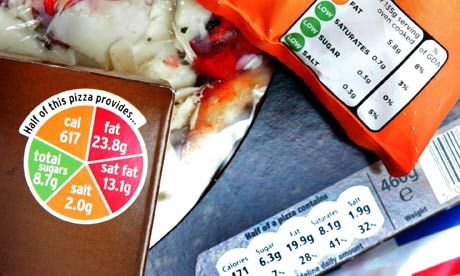
This is the conclusion of a study published this month by a partnership of environmental groups based in France and Belgium: Générations Futures, the Health and Environment Alliance (Heal), Réseau Environnement Santé (RES) and WWF-France. The authors of the study bought food in supermarkets in Oise, north of Paris, and in the French capital, sufficient to give a typical 10-year-old three meals a day and a snack. The food was not organic but was consistent with a balanced diet.
The authors then asked independent laboratories to analyse the food, checking for possible residues of pesticides, dioxins, heavy metals, plasticisers (phthalates, bisphenol A or perfluorinated compounds [PFC]) and for food additives.
Their findings are instructive: 34 chemical substances were found in the fresh salmon, more than half of which are either carcinogens or EDs; the processed cheese contained six substances, all of which are carcinogens and EDs. The unsalted butter, served at breakfast, contained 15 residues, the beefburger (15% fat) contained 10, all of them carcinogens and EDs. Overall 128 chemical residues would have been consumed in a single day. Worse still, substances banned in France were found in a tin of green beans imported from Kenya and one forbidden substance in rice from Asia.
Admittedly in almost all cases products complied with the legal limit for each substance. But "the number of pesticide and pollutant residues found is striking", says Dr Laurent Chevallier, a nutritionist and member of RES. He wants "more controls and research into the cumulative effect of the various chemical substances and the period of exposure".
The results "are worse than we expected", says François Veillerette of Générations Futures, who agrees that the study, the first in a campaign on the environment and cancer by the organisation, should be continued in greater detail.
"No allowance is made for the effects of probable interaction caused by consuming a cocktail of contaminants of this sort, and the long-term risk for consumers is probably seriously underestimated," the study claims. "We still know very little about the impact of such chemical cocktails in our food," says Veillerette. "We are calling for the precautionary principle to be applied, in order to reduce [...] contamination of the environment and in particular our food by substances suspected of being carcinogens," the study adds.
"What is harmful is not the intensity of the dose but the repetition of small doses, and consequently the period of exposure," explains Professor Dominique Belpomme of Paris University.
"Governments must find ways of substantially reducing the population's exposure to chemical substances, in particular through food," Veillerette says. There are alternatives, he points out, in particular low-input or organic farming.
Some commentators are nevertheless advocating a more measured response to the study. "We are bound to find chemical substances in our food, but what matters is the amount. Humans can metabolise the xenobiotics [present in food, medicine, indoor air, etc.] to which they are constantly exposed," says Dr Marie-Christine Boutron-Ruault, the head of research at Institut Gustave-Roussy, near Paris.
This article originally appeared in Le Monde



Reader Comments
to our Newsletter